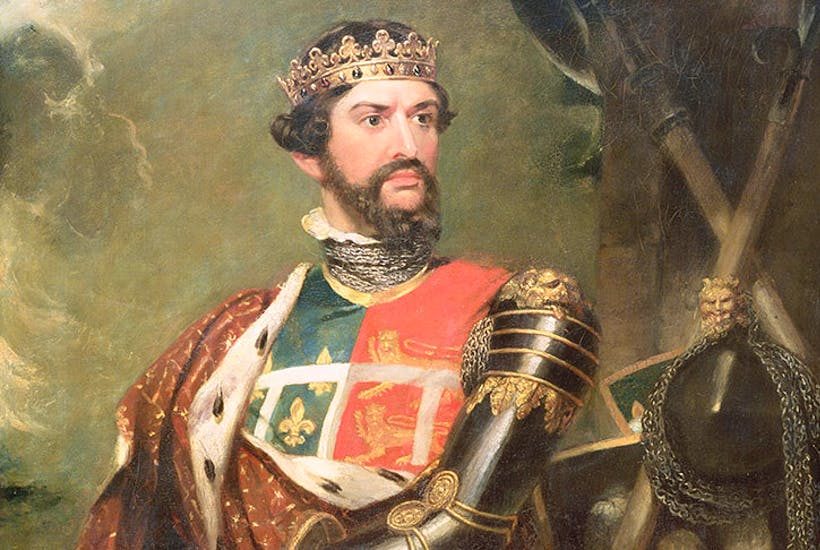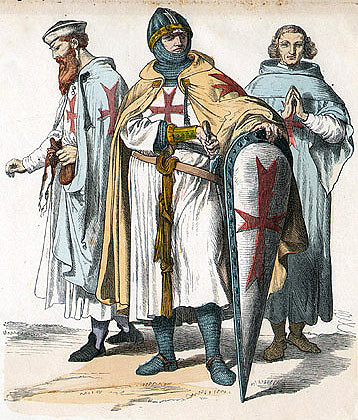Knights are individuals who are bestowed with the title of knighthood. A title conferred by the head of the state, the church or the monarch. Knights have been around since ancient Greece but the most notable ones were present in Medieval Europe. Knights follow a strict code of conduct and are known for their chivalry and mastery over weaponry. Let us explore 10 legendary knights in history.
1) Edward the Black Prince (1330-1376)
Edward of Woodstock is a knight who went down in history as the Black Prince. The title was given to him due to his black armour and jousting shield. He is also the greatest knight of his era and was considered the epitome of chivalry. He was the son of Richard III and was the heir to the English throne and was conferred with a knighthood by his father on July 11, 1346. Additionally, he was instrumental in the defeat of the French in the Battle of Crecy. Showing military excellence despite being only 16 at the time. Moreover, his role as the commander during the Hundred years war is what makes him a famous and legendary knight in history.
In 1355, he became his father’s lieutenant in the battle of Gascony. Another one of his significant battles is the Battle of Poitiers, where he led a victory against the French and captured the French King John II of France.

2) Joan of Arc- The Maid of Orléans (c. 1412-1430)
Although Joan of Arc led a short life, she went down in history as a legendary knight. She is celebrated for her fight against the English. As a young girl, she heard voices. These voices told her that she was the one chosen to lead France to victory. Following these visions, she sought an audience with the as-yet-unanointed King Charles VII, who was at the time fighting with the English. She was sent by him to help raise the siege at Orleans. She gained fame when the siege was lifted after only 9 days.
In 1430 she was captured by the English allies and was put on trial by the pro-English Bishop. She was found guilty on various charges, one of them being witchcraft. Subsequently, she was burned at the stake. She was only 19 at the time.
In 1456, Pope Callixtus III reexamined the trials and found her innocent and made her a martyr. Furthermore, in 1803, Napoleon Bonaparte declared her as the national symbol of France. She is now regarded as one of the Patron saints of France.

3) Geoffroi de Charny- An exemplary knight and author (c.1300-1356)
Geoffroi de Charny also called Geoffry of Charny was an exemplary knight who authored at least 3 works on Chivalry. He was in the service of King Jean II of France. Additionally, he was the founding member of the Order of the Star. An order of chivalry established by Jean II of France.
In battles, he carried the Oriflamme, which was the sovereign of the French Crown. Carrying this was a prestige that came with danger. Being its holder made him a target for the enemy. He died during the battle of Poitiers while holding the French banner in his hand.
He is regarded as a true knight and was one of the most respected knights of his time. Moreover, he was a firm believer that a knight should possess certain virtues and values. Another notable fact about Geoffroi was that he and his wife are one of the first recorded owners of the Shroud of Turin.

4) Gottfried “Götz” von Berlichingen- Götz of the Iron Hand (1480-1562)
“Götz” von Berlichingen was a German knight and a mercenary of the Holy Roman Empire. During his life, he took part in various feuds and military campaigns. The knight’s most famous campaign being the German Peasants War.
In 1504, Berlichingen and his army fought for the Duke of Bavaria. During a siege of the city of Landshut, he lost his right arm at the wrist. However, this loss did not stop him from participating in battles. He attached two prosthetic iron replacements to his arm. One which was of simple design and the second one which was famous for being capable of holding objects. This earned him the name Götz of the Iron Hand. This nickname made him a legendary and feared knight in history.

5) Hugues De Payens- The co-founder and Grandmaster of the Knights Templar (c. 1070-1136)
The details of his early life are scant, but Hugues De Payens is said to be a nobleman. He is celebrated as the cofounder of an order called the Knights Templar. Additionally, he is also their first Grandmaster. He is also said to have fought in the holy land during the First Crusade. At that time Christian pilgrims wanted to visit the Holy Land of Jerusalem. They were quite safe in the city but outside it was a different scene, they were robbed and often slaughtered by bandits. Hughes then approached the king of Jerusalem, King Baldwin II and proposed to create an order for the protection of the pilgrims. The king agreed to this request.
The order was first called the Order of the poor knights of Christ which eventually became the Knights Templar. It became famous over the next few years and in 1139, Pope Innocent II passed a law that exempted the knights from paying taxes, a major benefit for them. Knights Templar started losing power after the Muslims retook Jerusalem in the 12th Century. Furthermore, once the Crusaders lost their position in the Holy Land the support for the order began to dwindle as well. The order finally ended when King Philip forced Pope Clement V to disband the order in 1312.

6) El Cid (Rodrigo Díaz de Vivar)- The most famous Spanish knight (c. 1043-1099)
El Cid is another legendary knight in history. He is commemorated for his temporary conquest of Valencia. The moors gave him the title of El Cid which means ‘the Lord’ and the English gave him the title of ‘the Champion’. He was born into a Castilian family of minor nobility and served under two kings of Castile. He became famous for being a formidable military leader and strategist.
In 1094, he led a siege on the city of Valencia and subsequently became its ruler. Additionally, he had the popular support of Muslims and Christians during his rule. After his death in 1099, his wife succeeded him as a ruler but was eventually forced to surrender to the Almoravids in 1102.
El Cid remains one of the most famous Spanish knights in history. The famous poem ‘El cantar de Mio Cid’ is written in his honour. Additionally, he is commemorated as a Spanish national icon and many folk tales, songs and video games are based on him.

7) William of Poitiers (c. 1020-1090)
William of Poitiers was a Norman Knight. He was born into an influential Norman family. He trained to become a knight and later decided to enter the church and become a priest. When William the Conqueror became King of England he appointed William of Poitiers as his chaplain. It was then that he wrote detailed accounts of the King’s life. This book is called the Gesta Guillelmi. It tells how William the Conqueror prepared for the battle and what exactly took place.
Additionally, it provides a lot of detailed information and valuable insights about the Battle of Hastings. The Gesta Guillelmi, however, faces a lot of criticism and is called a biased and unreliable account of what took place in the battle. But in spite of being deemed as biased, William of Poitiers did provide accurate accounts of the battle as well.
8) William Wallace- An iconic Scottish Knight (c.1270- 1305)
William Wallace was one of the key figures during the First War of Scottish Independence. He became an important figure in the Scottish rebellion after murdering the English High Sheriff of Lanark. Additionally, is also instrumental in defeating an English army in the Battle of Stirling Bridge.
He was known for his tactical and strategic use of terrain and made use of clever tactics during battles. He was captured after a Scottish knight loyal to the English King Edward turned him in. Following the capture, he was charged with treason, to which he famously responded that he wasn’t a traitor to King Edward because he was never his subject. He was executed on August 23, 1305.
Moreover, the 1995 academy award-winning movie Braveheart is based on the legendary life of knight William Wallace.

9) Henry ‘Hotspur’ Percy (1364-1403)
Knight Henry Percy was a famous English Knight. He fought several battles against the Scots and the French. The Scots nicknamed him Hotspur for his readiness to attack. He was the son of the 1st Earl of Northumberland, Henry Percy. He was made a knight by King Edward III at the age of 13 in 1377. In 1399, his father and he were instrumental in helping Henry IV overthrow King Richard II. Subsequently, they were rewarded with territories in northern England and Wales.
However in spite of the favours, Henry IV bestowed upon them, the Percys were growing discontent with the king. They had various grievances. Due to that, they decided to rebel against the king and bring him down. Hotspur raised a rebellion against the king but was defeated and killed in the Battle of Shrewsbury.
10) William Marshall (c. 1146-1219)
The last in our list of legendary knights is William Marshall. He is one of the most famous, respected and admired knights in history. He was a knight who served under 5 kings. During his youth, he used to compete in tournaments. Travelling and winning these tournaments made him rich. He became the official Earl of Pembrooke after his marriage to Isabel de Clare.
He was the regent for the 9-year-old King Henry III, and it was during this time that he negotiated in the signing of the Magna Carta in 1215. Additionally, he also fought and secured victory in the Battle of the Lincoln despite his advanced age (he was 70 at the time).


